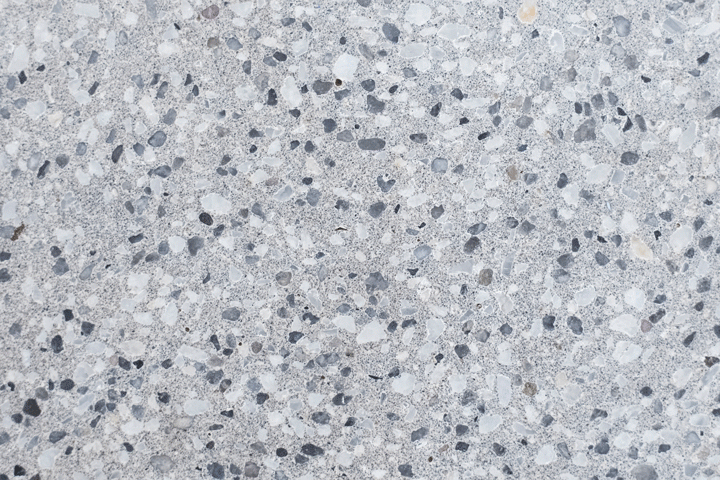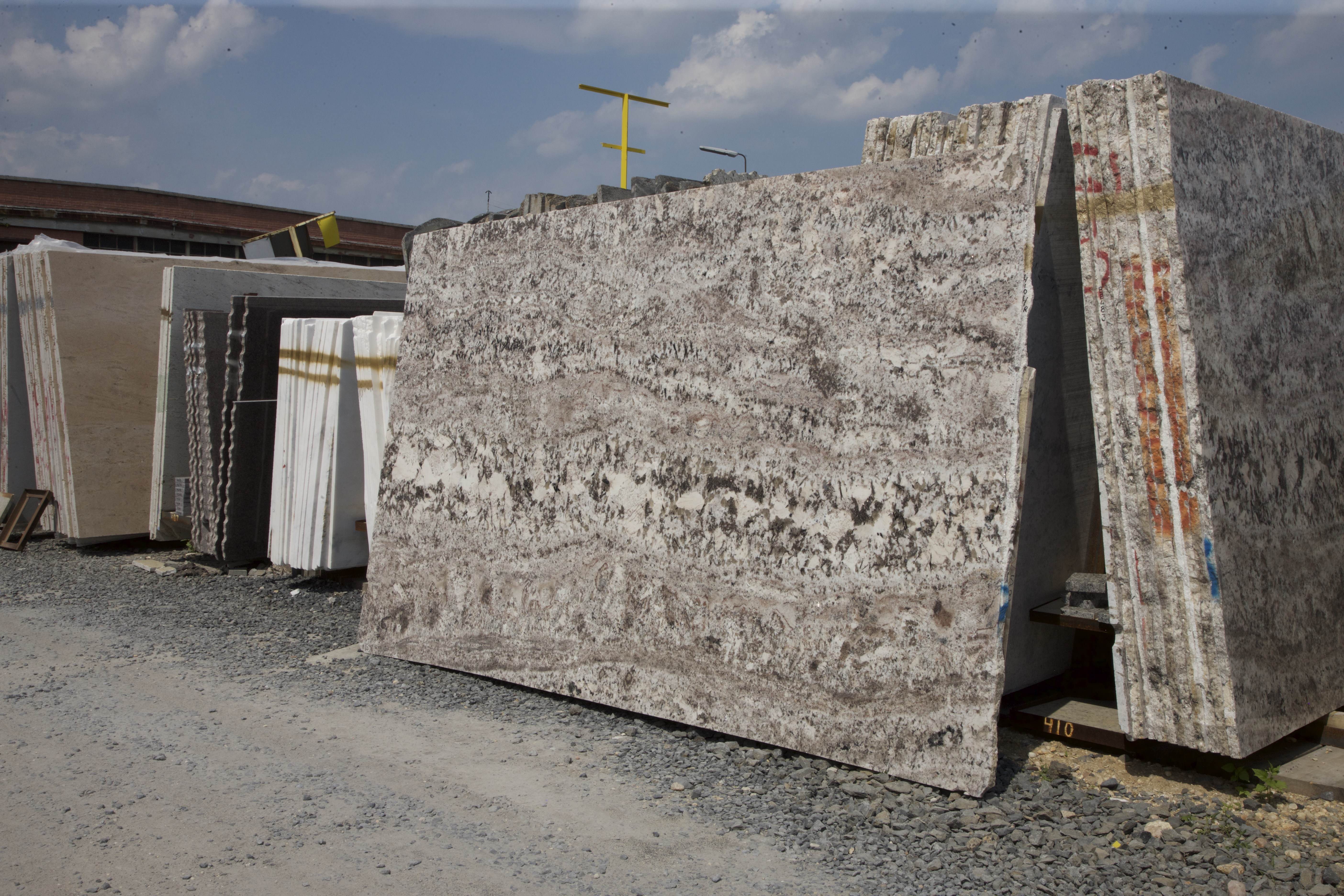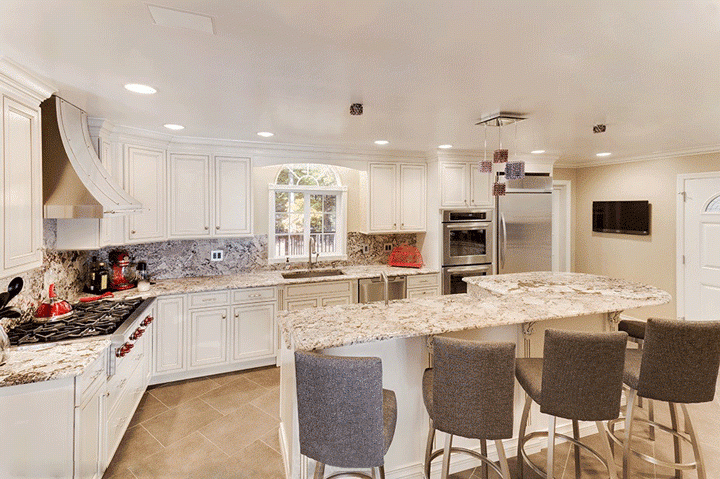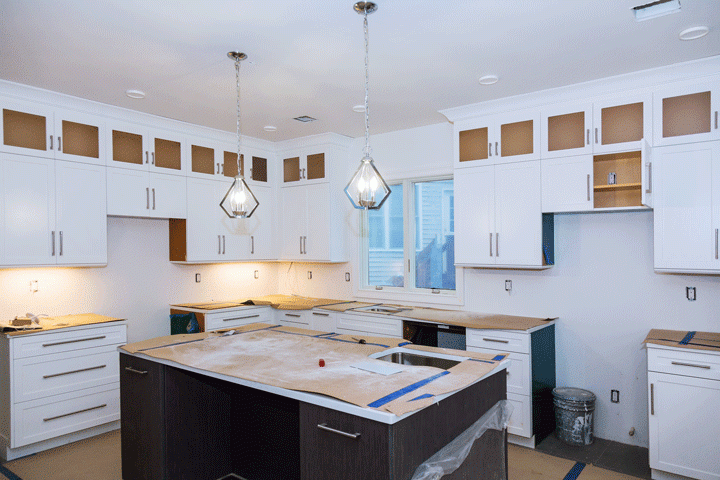
Table of Contents
If you are searching for a countertop that is durable and has high-quality looks, Silestone countertops may be just what you are looking for. Silestone is a brand of quartz that is manufactured by Cosentino in Spain. If you are looking to buy a Silestone countertop, it will not be cheap. However, once you learn about the appearance and functional benefits these countertops can offer, you may decide that it is well worth the cost. This guide will carefully analyze everything that you will want to think about before deciding if Silestone is the way to go.
What is Silestone?
Silestone is a brand of quartz countertops that is manufactured in Spain by Cosentino. The countertops are made from a combination of 94 percent ground quartz mineral and 6 percent resin. Typically, all brands of quartz countertops will be made of somewhere around 90 to 95 percent quartz, with the remaining percentage being resin that works as a binding agent. This combination makes Silestone countertops some of the most durable surfaces that you will be able to find.
[get_quote]
How Much Do Silestone Countertops Cost?
If you are looking for a cheap countertop, Silestone certainly won’t be your number one choice. Between stylish looks and the durability of these countertops, you will have to pay for the advantages it will give you. In general, depending on a variety of factors, Silestone countertops cost in between $60 and $140 per square foot, installed.
What Factors Impact the Cost of Silestone Countertops?
There are several factors that will have an influence on the price of your Silestone countertop. These factors include:
-
How Large Your Countertop Is
-
Customization
-
Countertop Grade
-
Countertop Thickness
-
Different Patterns
-
Cost of Labor
How Large Your Countertop Is
The size of your new countertop will play a significant role in determining the final price. The more material you will require for the job, the more you’ll have to pay.
Customization
Customization can also add to the overall price of the project. Customization can include elements such as decorative edging and corners. If you choose to have the standard Silestone rounded edges, it will not add to the overall cost. However, if you choose to have the custom edgings, such as a bevel or waterfall edge, it can tack on quite a bit to the cost of the project. For corners, you can choose to have either rounded or square edges. Rounded edges will cost more than square edges.
Countertop Grade
The price of Silestone countertops depends a lot on the grade of the countertop you choose. The grades are based upon the smoothness or grittiness of the countertop surface.
Countertop Thickness
Standard Silestone countertops are ¾ of an inch thick. These surfaces will require a piece of plywood below to support it. Countertops that are thicker than this do not need to have plywood installed underneath but are more expensive than those with the standard thickness. These countertops will be more expensive because you will require more of the material and they are more difficult to install.
Different Colors and Patterns
Different colors and patterns can play a part in how expensive your Silestone countertop is. Some colors and patterns will be priced higher than others.
Cost of Labor
As with any countertop installation, you will need to factor in the cost of labor to have it installed. If you are thinking of saving money by installing your new Silestone countertop on your own, you will need to think otherwise. These countertops are extremely heavy and must be installed by professionals. In addition, having professionals install your new Silestone countertop will reduce the chances that the surface is damaged during installation, as well as guaranteeing that you do not get hurt trying to install the countertop yourself.
How Does the Cost of Silestone Compare to Other Stone Countertop Options?
The table below displays a price comparison for Silestone and other stone countertop options. Silestone falls in the pricier range among these options, depending on what specific type you choose.
| Granite | Between $35 to 75 per square foot |
| Marble | Between $40 to 100 per square foot |
| Quartz | Between $50 to 120 per square foot |
| Slate | Between $50 to 200 per square foot |
| Soapstone | Between $55 to 100 per square foot |
| Silestone | Between $60 to $140 per square foot |
| Limestone | Between $70 to 200 per square foot |
| Onyx | Between $75 to $250 per square foot |
| Gemstone | Start around $100 per square foot |
What Are the Advantages of Silestone Countertops?
There are many advantages that you can receive from Silestone countertops. These include:
-
High Quality Looks
-
Durable
-
Non-porous
-
Scratch Resistant
-
Bacteria Resistant
-
Low Maintenance
-
Easy to Clean
High Quality Looks
Silestone countertops come in many different attractive styles, including some that can replicate the look of natural stone. There is also a large variety of colors and styles available for you to choose from.
Durable
As mentioned, Silestone countertops are one of the most durable countertop surfaces that you will be able to find on the market. The material will stand up better to wear and tear than many other materials do.
Non-porous
Because Silestone countertops are quartz, an engineered stone, there is no need for the sealing required by most natural stone countertops. The surface is non-porous, so it will not be prone to staining.
[get_quote]
Scratch Resistant
Silestone countertops are resistant to scratching. You may find this particularly helpful in the kitchen.
Bacteria Resistant
The countertops are also resistant to bacteria; more so than even other brands of quartz countertops. This is a major benefit in both the kitchen and the bathroom.
Low Maintenance
Silestone is just about as easy as it gets in terms of maintaining a countertop. As noted above, you do not need to seal the countertop.
Easy to Clean
Silestone countertops are extremely easy to clean. All you will need is soap and warm water.
What Are the Disadvantages of Silestone Countertops?
-
Cost
-
Not Heat Resistant
-
Visible Seams
-
No ‘Classic’ Appeal
Cost
Considering how many benefits Silestone offers, it should not be a surprise that the countertops are on the pricier side. However, if you are on a tight budget, perhaps Silestone countertops are not for you.
Not Heat Resistant
One of the major disadvantages of Silestone, and all other brands of quartz, is that the countertops are not heat resistant. You should not expose the surface to excessive heat. Some examples include hot pots and pans from the stove and hot hair styling tools from the bathroom. Placing items such as these on the countertop, or otherwise exposing the surface to high amounts of heat, will leave permanent burn marks on your countertop. This occurs because the resin begins to melt when it comes in contact with levels of heat that are too high.
Visible Seams
The seams on your Silestone countertop will be more visible than those made of natural stone. You may want to see if the seam can be placed in an inconspicuous spot.
No ‘Classic’ Appeal
Despite offering many advantages, including high quality looks, there is nothing quite like natural stone. Silestone does a very good job at replicating the look, but many homeowners prefer the traditional appearance and feel of natural stone countertops.
How Does Silestone Compare to Caesarstone?
While Silestone may be one of your top options for quartz countertops, there are many other reputable brands to compare it to. One of these brands is Caesarstone. Caesarstone is a company that is based in Israel, where they manufacture most of their quartz countertops. Caesarstone countertops are made by combining about 93 percent quartz with 7 percent resins and pigments.
Cost Comparison: Silestone vs. Caesarstone
The table below compares the average costs of Silestone and Caesarstone.
| Silestone | Between $60 to $140 per square foot |
| Caesarstone | Between $40 to $100 per square foot |
As you can see, Caesarstone is generally less expensive than Silestone, with some overlap in pricing. However, while Caesarstone is another great option for a quartz countertop, many homeowners are drawn to the bacteria resistant surfaces that Silestone offers. The bacteria resistant properties of the countertops is what sets Silestone apart from the many other quartz brands.
Appearance Comparison: Silestone vs. Caesarstone
In terms of appearance, Silestone offers a few more colors than Caesarstone, while the latter offers some additional edge profiling.
How Does Silestone Compare to Cambria?
Cambria is yet another top quartz countertop brand on the market. The company manufactures their product at their plant in Minnesota. This is appealing to homeowners who want to boost the American economy as well as those who are seeking the most environmentally friendly option available. Because Cambria manufactures in the United States, this cuts down on pollution caused by various transportation methods. In addition, the company recycles any waste that is left over. The surfaces are created using roughly 90 percent quartz and around 10 percent resins, polymers and pigments.
Cost Comparison: Silestone vs. Cambria
The table below is a price comparison of Silestone and Cambria.
| Silestone | Between $60 to $140 per square foot |
| Cambria | Between $50 to $100 per square foot |
Much like Caesarstone, Cambria generally falls into a lower price range than Silestone, with some overlap existing. A primary separating factor between the two brands is the aforementioned environmental impact. Cambria does not have to be imported, which cuts down on the amount of air pollution during transport. In addition, all of the waste produced during the manufacturing process is recycled.
Appearance Comparison: Silestone vs. Cambria
Cambria has a wider variety of colors and styles to choose from than Silestone. In addition, all colors of Cambria are priced the same, while other brands fluctuate based on appearance.
Where Can You Implement Silestone Countertops in the House?
Silestone, and any quartz countertop for that matter, will work well almost anywhere in the house. The surfaces are as close to indestructible as you will find for countertops. Be sure to not place any hot items on the surface, however, as the countertops will sustain burn marks if you do. Also note that you should not install a quartz countertop in an outdoor setting. The countertop may become damaged by the elements.
Installing a Silestone countertop in a high traffic area of the house is a wise idea. Because quartz is so durable, the countertop will be able to withstand the frequent use that it would have. There is no doubt that you will get your money’s worth if you have a quartz countertop in a busy kitchen.
What Edge Profiles Does Silestone Offer?
Silestone offers a multitude of edge profiles. The company offers six different edge profiles for all of their products. These six options are:
-
Straight Beveled
-
Basic Eased
-
Bullnose
-
Ogee
-
Mitred
-
Demi-Bullnose
Straight Beveled
The straight beveled edge is a square edge that features a slant at the top.
Basic Eased
The basic eased edge is square with a slightly eased top edge.
Bullnose
The bullnose edge is completely rounded.
Ogee
The ogee edge looks like an s-shaped edge.
Mitred
The mitred edge features two angled pieces joining to make the surface appear to be thicker.
Demi-Bullnose
The demi-bullnose edge is rounded at the top and flattens to form a straight edge at the bottom. It is also referred to as the half-bullnose edge.
What Slab Sizes Does Silestone Offer for Countertops?
Silestone offers two different slab sizes for countertops:
-
Standard
-
Jumbo
Standard
The standard size slab offered by Silestone is 55 inches by 120 inches.
Jumbo
For larger projects, Silestone also offers a jumbo size slab. This slab measures 63 inches by 128 inches.
How Does Silestone Compare to Granite?
Often times when quartz is compared to a natural stone, it is compared to granite. Granite is one of the top countertop options on the market, as well as one of the most popular. So how do Silestone and granite compare to each other?
Cost Comparison: Silestone vs. Granite
Below is a table that compares the cost of Silestone to the cost of granite.
| Silestone | Between $60 to $140 per square foot |
| Granite | Between $35 to $75 per square foot |
As evidenced in the table, granite is generally cheaper than Silestone. Granite is a natural stone that comes in many different colors and styles. It is a popular countertop choice due to both its looks and its functional benefits. Granite is extremely durable. It is a particularly popular choice for kitchen countertops because, unlike quartz, granite is heat resistant.
Appearance Comparison: Silestone vs Granite
As explained above, granite can be found in many different colors and patterns. Different slabs have variations of flecks, veins and swirls running throughout. A major difference between Silestone and granite is that, because it is natural, no two slabs of granite are exactly the same. This may appeal to homeowners who want to feel that their countertop is unique. On the other hand, the fact that quartz countertops can be customized to look like any natural stone countertop may appeal to some. In the end, which material looks better is simply a matter of personal preference.
How Does Silestone Compare to Marble?
Another natural stone that Silestone is often compared to is marble. Silestone has many styles available that can replicate the look of marble while having the advantage of less maintenance. Marble is one of the top countertop options on the market and is a stone that will stay beautiful for years as long as you properly care for it. Below is an analysis of how Silestone and granite compare.
Cost Comparison: Silestone vs. Marble
| Silestone | Between $60 to $140 per square foot |
| Marble | Between $40 to $100 per square foot |
In general, marble is less expensive than Silestone, though some overlap in pricing exists. The price of marble, as with the majority of countertop options, will vary depending on factors such as color, rarity and how much of the stone you need.
[get_quote]
Appearance Comparison: Silestone vs. Marble
Much of marble’s popularity is due to the natural stone’s appearance. Marble has long been recognized as a beautiful natural stone and has been used to build everything from countertops in homes to some of the world’s most famous statues. Much like granite, marble can also be found in many different colors and patterns. In addition, marble is also a natural stone, meaning the no two slabs are exactly the same. While Silestone and other quartz products may be able to reproduce the look of marble, many homeowners still desire to have real marble in their homes. As was the case with granite, whether Silestone or marble is more attractive is a matter of personal preference.
Where Else Can You Use Silestone in the House?
Silestone can be used for more than just countertops. You can also use it for backsplashes and flooring. Silestone surfaces will truly look great anywhere in the house. The surfaces are ideal for use in high traffic areas of the home. Just remember not to expose Silestone surfaces to excessive heat.
How Do You Know if a Silestone Countertop is Right for You?
To determine if a Silestone countertop is right for you, review the pros, cons and comparisons listed above. Because a countertop is such a large investment, and one that you will likely only have to make once, you want to make sure you carefully evaluate all of your available options before deciding on what to purchase.
If you are looking for a countertop material that is beautiful and comes with low maintenance, Silestone surfaces can be a good choice for you. These two factors are what makes Silestone, and quartz in general, so attractive to homeowners. On the flip side, there are still many homeowners who desire the look and feel of natural stone countertops in their homes. Although Silestone does its best to replicate the looks of natural stones like granite and marble, there is nothing quite like the actual natural stones. Even though Silestone may be on the pricier side for a countertop, you may end up deciding that the looks and functional benefits are well worth the cost.
National Average
$4,000
(30 sq.ft. of moderate countertop with eased edge, undermount sink, and no backsplash)
Cost to install kitchen countertops varies greatly by region (and even by zip code). Get free estimates from countertop installers in your city.
Find out how much your project will cost.
















 The article helped me immensely
The article helped me immensely
 I’m now more informed on the subject
I’m now more informed on the subject
 I have questions about Marble.com
I have questions about Marble.com
 The article was not accurate at all
The article was not accurate at all
 There is a serious lack of information
There is a serious lack of information
 I have questions about Marble.com
I have questions about Marble.com